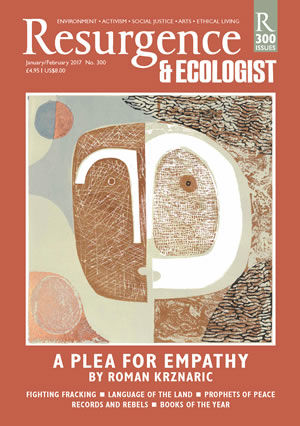Ladders to Heaven is a fine, enchanting and illuminating book about fig trees. Its author, the environmental writer Mike Shanahan, has been steeped in the culture, history, biology, ecology and literature of this glorious and resilient species for 16 years. The result is a moving and joyous letter of love to the Ficus, written with skill, precision, erudition and grace.
In 12 elegantly constructed and interwoven chapters, the reader is drawn into the fascinating world of the fig tree and the author’s relationship to it. Evocative illustrations, Shanahan’s own, adorn the text, adding to the enjoyment.
The book begins in medias res, with a sweat-soaked Shanahan atop a tall tree in the Bornean rainforest, “hanging from the last of seven ladders that somebody had lashed, toes-to-shoulders, flush to the tree”, and being watched by an unblinking, venomous snake.
The scientist’s quest to understand figs entails great exhilaration, just as it did for the explorers of the past described in the book, among them Alfred Russel Wallace, whose researches played a vital role in Darwin’s ascendancy, and E.J.H. Corner, who trained pig-tailed macaques (his “botanical monkeys”) to help pick his fig specimens for him.
Ladders to Heaven, as its title suggests, is strong too on the cultural history of the fig tree, at the heart of Christian mythology but also central to Greek myth, Hinduism, Buddhism (with the Buddha seeking enlightenment under a fig tree) and Islam. Shanahan believes fig trees “could build vital bridges between scientific and faith-based world views”, as well as perhaps between religions themselves.
In an astonishing chapter, Sex & Violence in the Hanging Gardens, he describes the remarkably intricate process of figs’ reproduction, aided by fig wasps. The text would be a good script for a David Attenborough programme: “On a moonlit night in southern Africa”, it begins, “a reproductive race is about to begin. The stakes are high but so are the risks. Most of the competitors will be dead or doomed by dawn.”
Among many noteworthy aspects of this miraculous process are the male fig wasps, who sacrifice themselves to predatory ants to enable the female fig wasps, laden with fertilised eggs, to escape and embark on their frenzied dash to find the right fig for production, often tens of kilometres away.
Fig trees are at risk, of course, from climate change, ecosystem depletion and the ongoing threat of deforestation and forest degradation. And this poses a risk in turn to the integrity of the ecosystems themselves: if figs disappeared from Peru’s Amazon basin, the author argues, citing research from Princeton, “the entire ecosystem could collapse.”
Fortunately, local people seem deeply aware of the cultural and existential value of fig trees. “In Guatemala, Mayan communities believe that felling a Ficus cotinifolia will cause the rain to stop, as the tree is the source of water.” Wangari Maathai’s notable contribution to Africa’s environmental cause was inspired by her childhood spent playing under a Ficus natalensis in the Kenyan highlands.
Fig trees are also powerful colonisers and have survived the volcanic eruptions of Long Island and Krakatoa, “where fig trees helped forests return to what was once black lava”. The Ficus, Shanahan persuasively argues, could be the key “framework species” – in biologist Stephen Elliott’s formulation – in global efforts to promote tropical forest landscape restoration.
In summary, “the more forests there are in the world, the more liberated humanity can be,” argues Shanahan, and fig trees will be at the heart of the world for millennia, if not millions of years, to come. The fig trees that survive amid the ruins of ancient civilisations in Guatemala and Cambodia are “living reminders that the good times don’t last forever, that despite humanity’s perceived dominion over all creatures great and small, we remain part of nature, not apart from it”.







